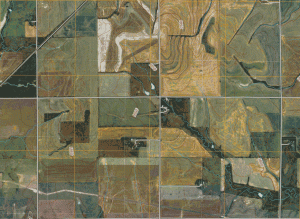A colleague of mine, Katie Bourzac, has written a post about the future of supercomputing according to IBM. Yes, the future is light. Essentially, the only way to find enough bandwidth to transport all the data required for future supercomputers is to use photons in waveguides, not electrons in wires.
The problem, however, is that it’s far too expensive to stick today’s lasers, detectors, modulators, amplifiers, etc. into computers. These devices are used to send data through the optical fiber that connects the world to the Web, but they are made of materials that are relatively expensive like indium gallium arsenide and others. There’s good news, though, for those who love supercomputers (and really, even if you don’t know you do, you totally do): there are a number of companies, including IBM and Intel, that are looking at using silicon–the same material found in electronics everywhere– for photonic devices.
If you know anything about bandgaps and optical properties of materials, you know that using silicon for photonics sounds a little crazy, but within the past five years, researchers have come up with engineering work-arounds that have made silicon feasible . And because silicon is at the heart of the electronics industry, and there’s a whole manufacturing infrastructure built around it, huge quantities of electronics can be churned out relatively quickly. Soon, photonic devices made of silicon could be churned out just as fast, and at such volume that their prices plummet. That’s when they can be integrated into computers and eventually chips.
It’ll take some time–some say at least a decade–but the gears have already been set in motion. Intel, for example, is pushing its photonics research into the market. The company recently announced Light Peak, an optical cable that attaches a personal computer to peripherals, shuttling data at 10 gigabits per second. The first versions will contain old-school optics made with expensive materials. But Mario Paniccia, head of Intel’s Photonics Technology Lab hopes that Light Peak will be the Trojan horse to get photonics into the electronics industry; future versions will likely use silicon photonic parts.
Silicon photonics is a topic I’ve covered extensively for Technology Review. For the curious, here’s a link. I’ll continue to follow the work in the field because, from what I’ve seen, it’s the only way to keep pushing computation speeds. Also, it’s just so nerdy cool.

 My friend Dan, who helped me build the light pipe prototype, recently got a CNC mill. He’s been asking me if there’s anything I want to make with it, and now I think I have an idea.
My friend Dan, who helped me build the light pipe prototype, recently got a CNC mill. He’s been asking me if there’s anything I want to make with it, and now I think I have an idea.
